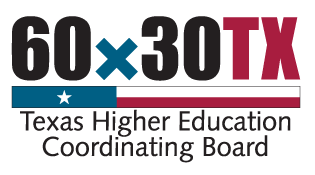In our college counseling office, we have prominently displayed a map of the United States that depicts 1,300 different major colleges and universities. We use this map to mark our college acceptances, alumni matriculation, and college graduations to encourage current students to feel more comfortable with the idea of sending their applications to colleges outside of Texas. They stick with what they know because the options are overwhelming, and not just to students. The map is the first thing that people see when they walk in, and it evokes the same response from anyone who enters: “Wow, I didn't realize how many colleges there are! How do students choose which to apply to?”
Step One: Set a limit for your students.
I encourage my students to apply to at least four colleges, but no more than ten. I believe that these limits allow them to include a variety of schools but also require that they give serious thought to each option.
Providing a limit also gives students a goal. Suddenly, they aren’t just compiling a long list of potential colleges that could go on forever. They are making decisions, being methodical, and boiling down their list to the core.
Once they have their set number or limit, they can begin step two.
Step Two: Decide what factors are important for the college to have.
Ask the student: “What are your top three nonnegotiables for your dream college? Location, size, major, etc.?”
College search engines ask students to filter their search so that they don't end up with endless colleges to sift through. However, too many filters can result in zero options, which can be discouraging. By requesting three nonnegotiable factors, students are considering their actual preferences, not simply college names or reputations.
By deciding which factors are important before they dive into the research phase, students are allowing themselves to personalize their search. As they research, they will realize that not every college has what they’re looking for, and building their list automatically becomes less daunting.
Below are some examples of nonnegotiables and questions you can ask your student as they are determining their list:
- Graduation Rate: Do most of the students graduate in four years? If not, why not?
- Retention Rate: Do most freshmen return to the college as sophomores?
- Location/Size: Do you prefer a big city, suburb, or small town? Do you want a smaller campus with smaller class sizes or a larger school with a wider variety of programs? Is weather a concern for you?
- Majors: Does the college offer a variety of majors that interest you?
- Academic Resources: Do library, technology, and lab facilities meet your needs?
- Campus Life and Services: What are the housing options? Are there social activities, cultural events, clubs, or athletics that interest you? What support services are available on campus to help with social, health, academic, and financial challenges?
Step Three: Research.
The most important part of building the college list is research! Guide your students to your most trusted college search tool: BigFuture, Cappex, Niche, etc. There are endless options for search tools, but guiding students to one trusted source is key to making the research process manageable.
Encourage students to make a profile on one of these search tools. The profile will not only allow students to save their list and come back to it as reference, it will also help students include academic fit in their search, because their profile will include their GPA and test scores. Students need a balanced list: typically 25% should be reach schools, 50% should be match schools, and 25% should be safety schools. Students don’t always know how to determine these categories on their own, so having a profile on a search tool will guide the academic fit without them trying to puzzle that out too much on their own.
Once students have their profiles, they can begin filtering their search by their three nonnegotiables. Because the process has been boiled down at this point to a set number and their core values, finding colleges to include on their list should feel more manageable.
Happy hunting!
Be sure to check out additional resources on the college planning process.





